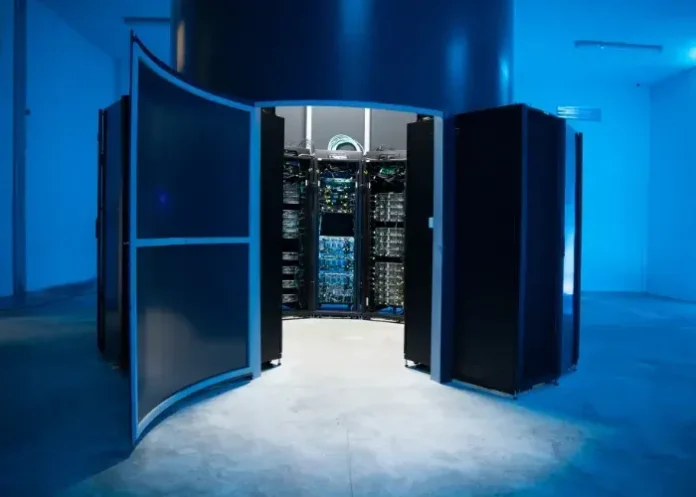The Pinnacle of Computational Power: A Comparison of the 13 Most Powerful Supercomputers
Supercomputers occupy a pivotal role in the technology space and they are by far the most useful machines engineered to address some of the most intricate issues known to man. Their applications cut across many fields and they include scientific research, artificial intelligence, climate change, and nuclear war games among others.
The table below lists and compares the specifications and applications of the thirteen most powerful supercomputers in the world, each with its own specific features and advantages.
| Supercomputer | Speed (petaFLOPS) | Cores | Peak Performance (petaFLOPS) | Vendor | Location | Primary Use |
|---|---|---|---|---|---|---|
| Fugaku | 442 | 7,630,848 | 537 | Fujitsu | RIKEN Center for Computational Science, Japan | COVID-19 research, AI training, climate modeling |
| Summit | 148.6 | 2,414,592 | 200 | IBM | Oak Ridge National Laboratory, USA | Scientific research, AI applications |
| Sierra | 94.6 | 1,572,480 | N/A | IBM | Lawrence Livermore National Laboratory, USA | Nuclear weapons research |
| Sunway TaihuLight | 93 | 10,649,600 | 3+ (per CPU) | NRCPC | National Supercomputing Center, Wuxi, China | Climate research, life sciences |
| Tianhe-2A | 61.4 | 4,981,760 | N/A | NUDT | National Supercomputing Center, Guangzhou, China | Government security & research |
| Frontera | 23.5 | 448,448 | N/A | Dell EMC | Texas Advanced Computing Center, USA | Academic & scientific research |
| Piz Daint | 21.2 | 387,872 | N/A | Cray Inc. | Swiss National Supercomputing Centre, Switzerland | Scientific research & LHC data analysis |
| Trinity | 21.2 | 979,072 | 41 | N/A | Los Alamos National Laboratory, USA | Nuclear security & weapons simulation |
| ABCI | 19.8 | 391,680 | 32.577 | N/A | National Institute of Advanced Industrial Science and Technology, Japan | AI research & development |
| SuperMUC-NG | 19.4 | 305,856 | N/A | Lenovo | Leibniz Supercomputing Centre, Germany | European research initiatives |
| Lassen | 18.2 | 288,288 | 23 | IBM | Lawrence Livermore National Laboratory, USA | Unclassified simulation and research |
| Pangea 3 | 17.8 | 291,024 | N/A | IBM & NVIDIA | CSTJF Technical and Scientific Research Center, France | Production modeling & seismic imaging |
| Sequoia | 17.1 | 1,572,864 | 20 | N/A | Lawrence Livermore National Laboratory, USA | Nuclear simulations, climate research, genome analysis |
Key Highlights of Notable Supercomputers
- Fugaku: Risk assessments and training related to COVID-19 are actively relying on Fugaku, which can deliver 442 petaFLOPS of processing power, the fastest in the world. Because of its ARM architecture, it can manage and run several types of models and simulations effectively.
- Summit: Having been the fastest supercomputer in the world between 2018 and 2020, the information processing capabilities of Summit allowed for further developments in studies on the human genome and research on drugs for COVID-19. It consists of a hybrid architecture containing IBM Power9 CPUs and NVIDIA Tesla V100 GPUs.
- Sierra: Often termed as redundant since the consumable resources are still functional, Sierra was developed specifically for stockpile management, advancing in simulated predictive capabilities concerning the deterred use of weapons.
- Sunway TaihuLight: This super computer embodies the strides China has made in the area of locally fabricated processors with emphasis on climate and biosciences as indicative of the country’s ambition of being an AI superpower by the year 2030.
- Frontera: Dubbed the most powerful supercomputer for academic institutions in the world today, Frontera is designed to provide support for a wide range of academic activities due to its high computational power.
- Piz Daint: Based in Switzerland, the architecture of Piz Daint which possesses various elements is designed to encourage heavy scientific computations which are crucial for substantial advancements in science.
- Trinity: Staged in two phase and bearing considerable computing capacity, Trinity is instrumental in carrying out high performance nuclear simulations.
- ABCI: The AI Bridging Cloud Infrastructure (ABCI) is dedicated to fostering high-speed developments of AI technologies and infrastructure. It implements superb cooling system to improve power usage efficiency.
- SuperMUC-NG: This supercomputer serves most of the research projects in Europe, and its new structure is enhanced to ensure that energy is conserved through water cooling design.
- Lassen: This supercomputer is small and works efficiently but offers adequate computing resources for almost all unclassified research activities.
- Pangea 3: Pangea 3 is designed and built with substantial effort on resource optimization in the oil and gas sector, thus greater efficiency is observed for energy consumption in the provision of seismic imaging services.
- Sequoia: Sequoia is extensively used in carrying out advanced nuclear simulations since it is a key component in the U.S. National Nuclear Security Administration’s stockpile stewardship program.
Conclusion
The world’s most advanced supercomputers possess complex powers and abilities which are fundamental to scientific research, technological improvement, and security. These machines are important in addressing the most current global issues like the improvement of health care systems as well as resolving climate change. With the growing culture of innovative thinking founded on data, the utilization of supercomputers will become more crucial in the achievement of AI and machine learning for the future advancements.

